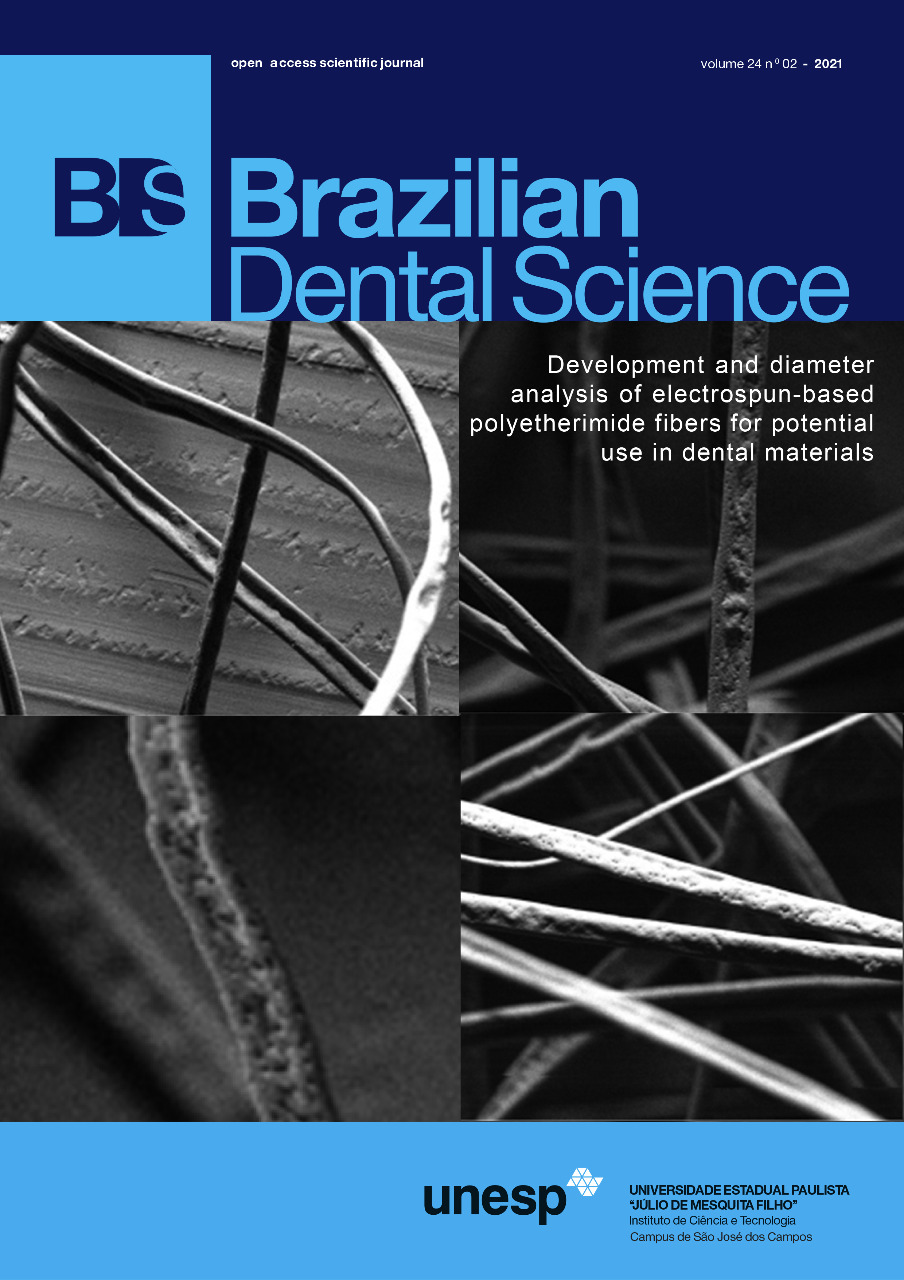Anatomical characteristics of mandibular bone in skeletal Class I, II and III patients by using cone beam computed tomography images in an iranian population
DOI:
https://doi.org/10.14295/bds.2021.v24i2.2475Resumo
Objetive: This study aimed to compare the anatomical characteristics of the mandible in patients with skeletal class I, II and class III disorders using cone beam computed tomography (CBCT). Material and Methods: CBCT scans of patients between 17 to 40 years taken with NewTom 3G CBCT system with 12-inch field of view (FOV) were selected from the archive. Lateral cephalograms were obtained from CBCT scans of patients, and type of skeletal malocclusion was determined (Class I, II or III). All CBCT scans were evaluated in the sagittal, coronal and axial planes using the N.N.T viewer software. Results: The ramus height and distance from the mandibular foramen to the sigmoid notch in class II patients were significantly different from those in skeletal class I (P < 0.005). Distance from the mandibular canal to the anterior border of ramus in class III individuals was significantly different from that in skeletal class I individuals (P < .005). Conclusion: Length of the body of mandible in skeletal class I was significantly different from that in skeletal class II and III patients. Also, ramus height in skeletal class I was significantly different from that in skeletal class II patients. CBCT had high efficacy for accurate identification of anatomical landmarks.
Keywords
Prognathism; Retrognathism; Mandible; Anatomy; Cone beam computed tomography.
Downloads
Downloads
Publicado
Como Citar
Edição
Seção
Licença
TRANSFERÊNCIA DE DIREITOS AUTORAIS E DECLARAÇÃO DE RESPONSABILIDADE
Toda a propriedade de direitos autorais do artigo "____________________________________________________________________" é transferido do autor(es) para a CIÊNCIA ODONTOLÓGICA BRASILEIRA, no caso do trabalho ser publicado. O artigo não foi publicado em outro lugar e não foi submetido simultaneamente para publicação em outra revista.
Vimos por meio deste, atestar que trabalho é original e não apresenta dados manipulados, fraude ou plágio. Fizemos contribuição científica significativa para o estudo e estamos cientes dos dados apresentados e de acordo com a versão final do artigo. Assumimos total responsabilidade pelos aspectos éticos do estudo.
Este texto deve ser impresso e assinado por todos os autores. A versão digitalizada deverá ser apresentada como arquivo suplementar durante o processo de submissão.




























